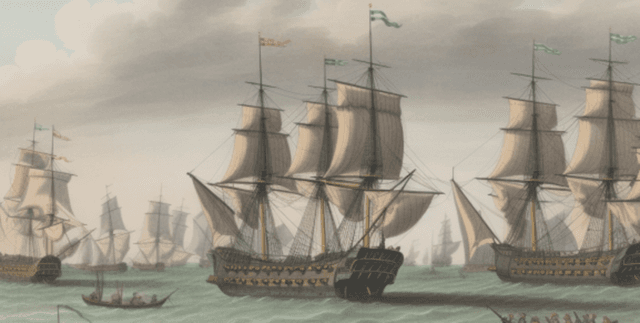VOC and WIC Maritime Textile Shipment Records
Data Science and Analytics
Tags and Keywords
Trusted By




"No reviews yet"
Free
About
Data details the circulation of textiles aboard Dutch ships worldwide during the seventeenth and eighteenth centuries, offering insight into the post-Golden Age activities of the Dutch merchant navy. The product provides structured information drawn from historical trade records, facilitating a deeper understanding of the global textile economy, production, and movement during this pivotal period of history.
Columns
The dataset contains 56 columns detailing various aspects of the trade records. Key fields include:
- exchange_nr: A unique identifier for each record.
- source: Specifies the original source document for the entry.
- company: Identifies the trading company involved, predominantly the VOC (Dutch East India Company) and WIC (Dutch West India Company).
- orig_yr: The year the shipment originated.
- orig_loc_region_modern: The modern geographical region of origin (e.g., Jakarta (former Batavia), Netherlands).
- dest_loc_region: The destination region of the shipment (e.g., Netherlands (former Dutch Republic)).
- textile_quantity: The numerical amount of textiles in the shipment.
- textile_unit: The unit of measurement for the quantity (frequently 'ps.' for pieces).
- textile_name: The historical name of the textile product, such as salempores or guinea cloth.
- textile_fiber_arch: The archived fiber composition of the textile (e.g., cotton).
- shipment_currency: The currency used for the shipment valuation, often Indian Guilders.
- total_value_guldens: The total value of the shipment expressed in guldens.
Distribution
The information is provided in a standard CSV file format (
WICVOCDataAll_030223.csv) and is approximately 9.85 MB in size. It includes 56 distinct columns and contains close to 22,900 records, each documenting a specific maritime trade event involving textiles.Usage
This data product is perfectly suited for analyzing the volume and routes of Dutch colonial trade. It can be used to track the movement of specific commodities like yarn and various named textiles globally. Furthermore, researchers can utilize it for studies on economic history, currency fluctuations, and the logistical challenges faced by major trading entities like the VOC.
Coverage
The temporal scope covers the seventeenth and eighteenth centuries, with detailed data samples often falling between 1700 and 1724. Geographically, the data reflects worldwide circulation, emphasizing key transit points and regions such as Batavia (modern Jakarta) and the Dutch Republic. The scope focuses specifically on textile shipments recorded in Dutch trade documentation.
License
Attribution-NonCommercial 4.0 International (CC BY-NC 4.0)
Who Can Use It
- Economic Historians: To model trade flow volumes and values between continents.
- Maritime Researchers: To reconstruct shipping routes and understand the activities of the Dutch merchant fleet.
- Textile Specialists: To investigate the types of historical textiles traded, including their names, colors, and fibers.
- Academics and Students: For use in research projects focusing on colonial history and early modern globalisation.
Dataset Name Suggestions
- Dutch Global Textile Trade Database, 17th-18th Centuries
- VOC and WIC Maritime Textile Shipment Records
- Historical Data on Seventeenth and Eighteenth Century Textile Circulation
Attributes
Original Data Source: VOC and WIC Maritime Textile Shipment Records
Loading...
